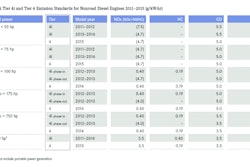2010 turned out to be a very positive year for the Research & Development Tax Credit (The Credit). First and foremost, The Credit was extended through 2011. In addition, the Small Business Jobs Act (SBJA) was enacted and it contained two provisions that help more companies take advantage of The Credit. There was a landmark ruling that can significantly increase The Credit for some companies and lastly, several states made positive changes to their state R&D Tax Credit.
R&D Tax Credit Extended by the Tax Relief Act of 2010
President Obama signed into law the “Tax Relief, Unemployment Insurance Reauthorization, and Job Creation Act of 2010” (“ACT”). One of the provisions of the ACT was the extension of the R&D Tax Credit through the end of 2011. During the year there was hope that The Credit would be made permanent with support of Democrats, Republicans and the President. In fact, the President had also requested that The Credit be simplified and increased with the intent of raising the number of companies taking advantage of The Credit by making it more valuable and easier to calculate. Unfortunately, the growing deficit made it impractical at this time to increase The Credit or make it permanent.
Many companies were reluctant to move forward with their 2010 studies because The Credit had not been extended for 2010 but now that problem has been resolved. The extension will also allow companies to make their hiring plans for 2011 knowing with certainty that The Credit is available.
Small Business Jobs Act: A Windfall for Small to Mid-sized Manufacturers
With a resounding and somewhat historic move, Congress passed and on September 27, 2010, the President signed into law the Small Business Jobs Act (SBJA). The SBJA provides much needed tax relief for small and medium sized businesses for 2010. Of particular and significant note are two provisions: the modification to a five year credit carryback and the modification of the Alternative Minimum Tax (AMT) in relation to general business credits.
Five Year Carryback on Unused General Business Credits
Previously, the carryback and carryforward rules for general business credits stated, generally, that unused credits were to be carried back only one year and, if unused in that year, then carried forward up to twenty years. The previous rules did not provide the immediate tax relief many taxpayers badly needed.
With the SBJA, taxpayers will be able to carry back unused credits generated in 2010 a total of five years before having to carry them forward. This change will allow many taxpayers who have been hit recently by the economy to still receive an immediate tax benefit, even if they are unprofitable in 2010.
There are two important aspects of carrying back unused credits. First, you will not need to amend your tax returns for the previous years. You just need to include IRS Form 3800 (General Business Credit) when you file your 2010 tax returns to claim your unused credits. (Note: please consult your CPA since this is an accounting issue)
Secondly, when you carry back unused credits, you cannot reduce the AMT for any of the five years as the SBJA allows for 2010. You can only reduce taxes paid over and above the AMT. Even so, there is a much greater likelihood that you will be able to utilize the unused credits immediately; instead of having to wait tocarry the unused credits forward.
General Business Credits Not Subject to AMT
Prior to the SBJA, general business credits generated by a taxpayer were subject to the AMT. This credit subjugation to the AMT drastically limited or completely eliminated the benefit of general business credits to many taxpayers. With the passage of the SBJA by Congress, many small to medium sized businesses will not have this AMT limitation applied to general business credits generated in 2010.
Congress has defined the businesses that can take advantage of this AMT change as being sole proprietorships, partnerships, and non-publicly traded corporations with $50 million or less in average annual gross receipts for the prior three years.
With more than 20 million Americans paying AMT, the ability for business owners to reduce their taxable liability through a slew of general business credits, including the Research & Development Tax Credit, is especially significant.
Immediate Tax Relief
These two provisions will provide the immediate tax relief needed by many small to medium sized businesses to help them succeed in today’s economy. It is noteworthy that these provisions will apply to the R&D Tax Credit allowing many taxpayers who were previously unable to take advantage of The Credit due to a lack of utilization, will now be able to do so.
The Positive Effect on the R&D Tax Credit
Due to the economy the last few years, many manufacturers have been unable to take advantage of The Credit. The main reason being that the taxpayers for these companies were subject to AMT.
Now with the SBJA, The Credit can reduce a taxpayer’s tax liability, regardless of AMT, thereby opening up The Credit to most of these taxpayers.
Even for smaller manufacturers, the R&D Tax Credit can be significant. Here are some examples:
Example 1: Four Year Study
Annual Payroll: $1.7 MM
Total Credit: $80,000
Example 2: One Year Study
Annual Payroll: $6.5 MM
Total Credit: $50,000
Example 3: Four Year Study
Annual Payroll: $1 MM
Total Credit: $60,000
Example 4: One Year Study
Annual Payroll: $3.5 MM
Total Credit: $60,000
Landmark Ruling Can Significantly Increase Research and Development Tax Credit
If your company conducts intercompany transactions, this landmark decision may help increase your research and development tax credit amount significantly.
On June 25, 2010 the District Court for the Southern District of Ohio issued a monumental decision in favor of Procter & Gamble and all U.S. corporate taxpayers (Procter & Gamble Co. and Subsidiaries v. United States, No. 1:08-cv-00608-TSB). The Court found that intercompany sales should not be included as a component of Gross Receipts, thereby affirming and preserving the Tax Credit’s substantial benefits and incentives for innovation to the U.S. taxpayer.
The decision represents a milestone for corporate tax guidance and methodologies and is a victory for corporations involved in the increasingly complex and global marketplace as it preserves the substantial tax incentives available to companies engaging in research and development activities. If your company is engaged in intercompany transactions, now is the time to review your R&D Tax Credit calculations to take advantage of this watershed ruling.
Positive Changes in State R&D Tax Credits
Several states have made changes to their state R&D Tax Credit to make it more lucrative especially to smaller companies. Here are two examples.
Minnesota
Minnesota passed a law effective TY 2010 that:
- Increased the R&D Tax Credit;
- Expanded eligible taxpayers from C-Corps to C-Corps, Partnerships and S-Corps; and
- Made the credits refundable.
Arizona
Arizona passed a law modifying the state’s R&D Tax Credit to make it partially refundable for TY 2010 and beyond.
A business that meets all of the following conditions may qualify for a refund:
- The current year’s Arizona R&D tax credit exceeds the current year’s tax liability;
- Employs less than 150 full-time employees, as of 12/31 of the year the tax credit is claimed; and
- Received a “Certification of Qualification” from the Arizona Department of Commerce, which will be available in December.
There is only $5 MM allocated towards it annually and as with most states it’s on a first- come first-served basis.
Taking into account all of the positive changes in the R&D Tax Credit for 2010, this year was outstanding. Our hope is that many more companies will realize that they do qualify for The Credit and will finally take advantage of this great tax incentive.
The authors are Saqib Dhanani, J.D., and Jeannette Golubovic, J.D., L.LM, Senior Tax Attorney, both of Paradigm Partners. Paradigm Partners is a national tax consulting firm specializing in niche tax services such as the R&D Tax Credit, Hiring & Location Tax Incentives, Sales and Use Tax, Contract R&D Audit & Consulting Services, the IC-DISC (U.S. Exporters' Tax Incentive), Section 179 and Cost Segregation. For more information, contact Mark Lauber at [email protected] or call (281) 558-7100 ext. 105
www.ParadigmLP.com



















